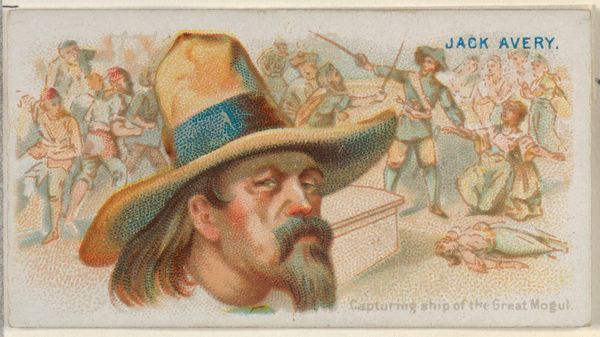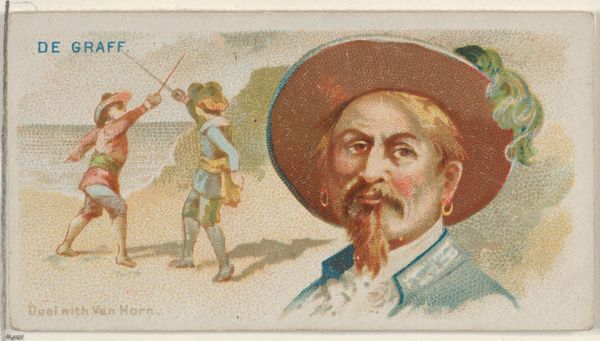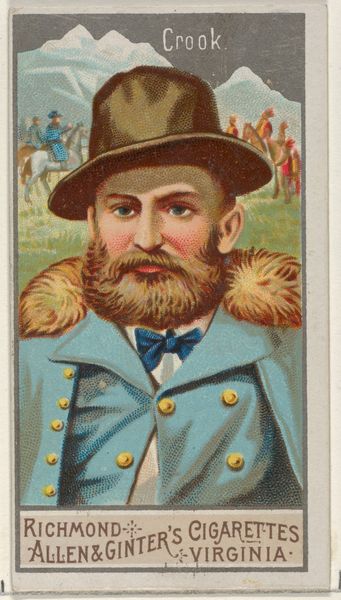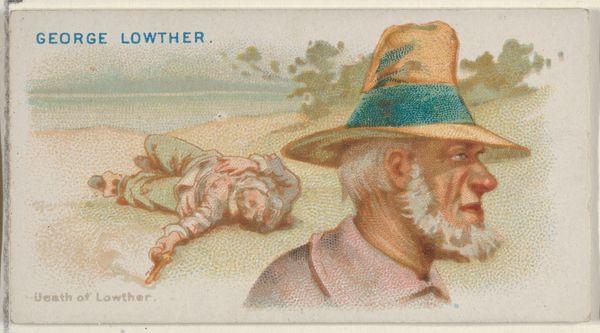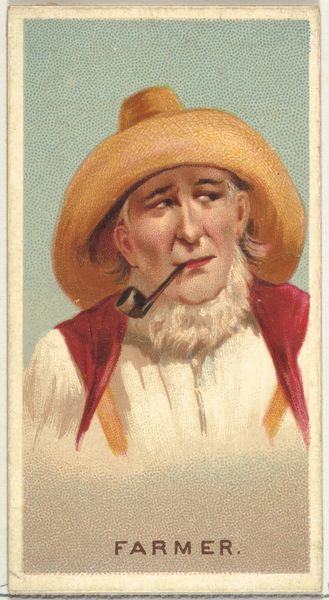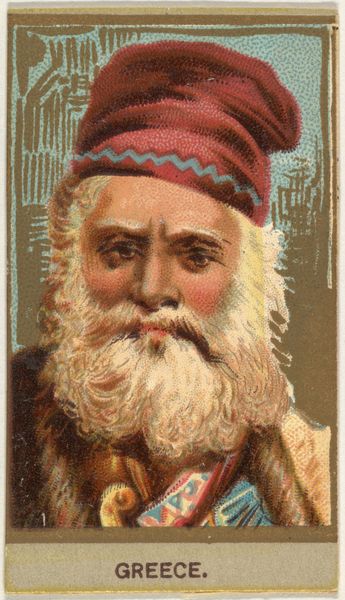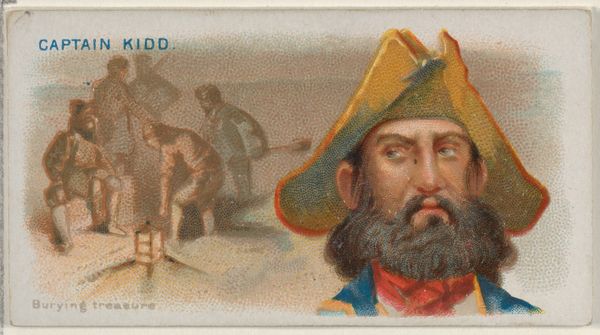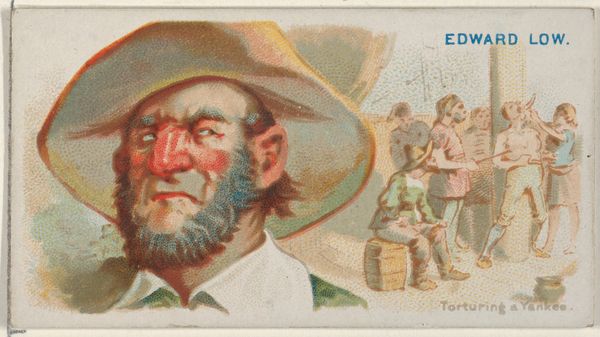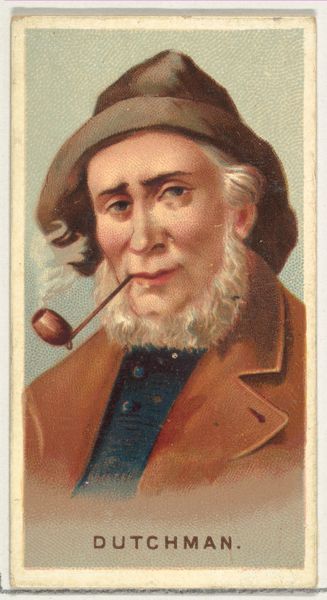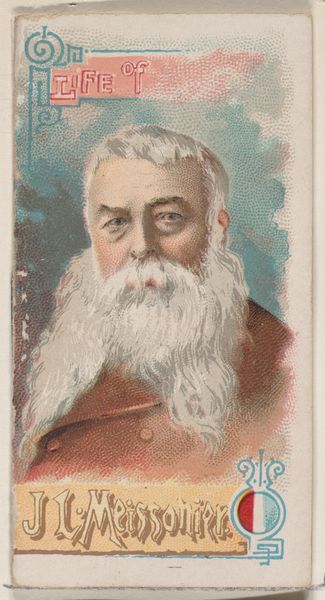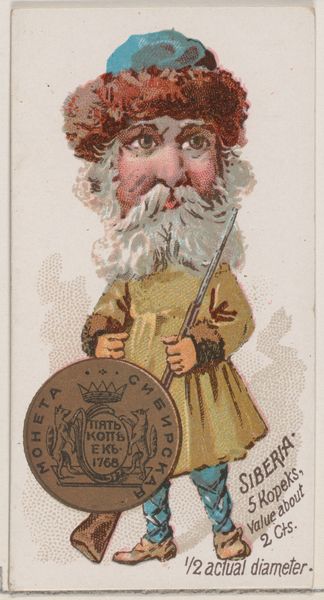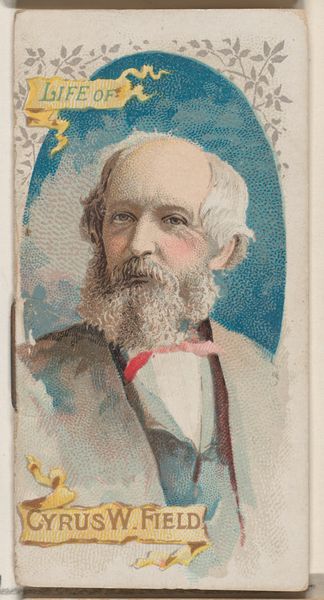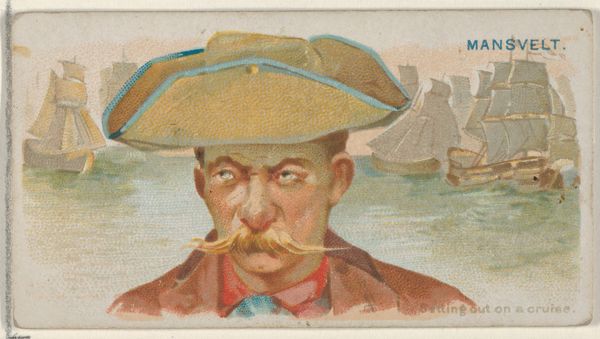
Captain Tew, A Calm, Rich Christian, from the Pirates of the Spanish Main series (N19) for Allen & Ginter Cigarettes 1886 - 1891
drawing, print
portrait
drawing
coloured pencil
men
genre-painting
academic-art
portrait art
miniature
profile
building
Dimensions: Sheet: 1 1/2 x 2 3/4 in. (3.8 x 7 cm)
Copyright: Public Domain
Curator: Here we have "Captain Tew, A Calm, Rich Christian" from the Pirates of the Spanish Main series, part of a set of cigarette cards by Allen & Ginter, dating from 1886 to 1891. It’s currently housed here at the Metropolitan Museum of Art. Editor: The texture immediately grabs my attention; the surface is smooth, likely printed, but the layering of colour gives it a surprising depth. And what an unusual juxtaposition of serenity and perhaps…guile in that gaze. Curator: These cards were not conceived as 'high art,' but as a promotional vehicle within the burgeoning tobacco industry. They represent the commodification of exoticism and adventure, transforming historical figures into collectible items associated with pleasure and consumerism. Editor: Absolutely. Structurally, the composition is quite fascinating. The portrait is a profile, neatly bisecting the image, setting up a dialogue between the sitter, and the depicted setting. Curator: The choice of a pirate—a figure often associated with lawlessness—paired with the descriptors “calm, rich, Christian” suggests an attempt to reconcile conflicting societal values, and perhaps, whitewash historical narratives. Who gets to define “calm” or “Christian,” especially in a colonial context fuelled by exploitation? Editor: Consider the muted colour palette. Browns and grays dominating the rendering of the subject and landscape, with calculated contrasting colours making the subject come forward in space. The portrait embodies characteristics and aesthetic preferences of the Academic style. Curator: What's equally fascinating to me is the distribution of these cards. Factory workers, often women and children, were involved in packing these cards, simultaneously contributing to and being consumers of these very images, perpetuating this cycle of consumption. Editor: It's an engaging example of a printed portrait of this period—so efficient and self-contained, relying on accepted colour systems, iconographic components like his fashion, facial features to establish very immediate meaning to the viewer. Curator: Looking beyond aesthetics is crucial when assessing art’s cultural impact; it’s essential we acknowledge the embedded political economy. It makes me wonder what stories lie buried beneath the seemingly calm surface. Editor: It prompts an intriguing debate on how we determine value and lasting art in works of this kind.
Comments
No comments
Be the first to comment and join the conversation on the ultimate creative platform.
